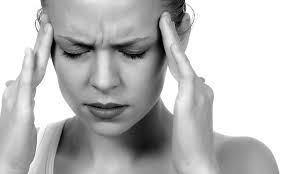 Migraines and headaches have long been viewed as a purely medical issue. But it’s not necessarily the case. While migraine education and research is constantly expanding, there still is no certainty of what causes (or cures) migraines. In fact, even during severe migraine auras, there are often no underlying medical issues detected, with MRIs and CT scans commonly negative. While medications are often prescribed to treat and prevent migraine symptoms, it is usually done so with the understanding that what the migraineur does on their own to understand their headaches may end up being the most effective treatment.
Migraines and headaches have long been viewed as a purely medical issue. But it’s not necessarily the case. While migraine education and research is constantly expanding, there still is no certainty of what causes (or cures) migraines. In fact, even during severe migraine auras, there are often no underlying medical issues detected, with MRIs and CT scans commonly negative. While medications are often prescribed to treat and prevent migraine symptoms, it is usually done so with the understanding that what the migraineur does on their own to understand their headaches may end up being the most effective treatment.
While there are many possible approaches for treating chronic migraines, psychotherapy has generally been under acknowledged as an effective way to treat many forms of chronic pain — ranging from migraines to gastrointestinal issues, and others.
Psychotherapy can play a significant role in reducing frequency and severity of migraines and headaches. While people who experience chronic migraines may be triggered by hormonal shifts, weather, certain foods, or exertion, it’s apparent that also many migraines are triggered by emotional elements of our daily lives — including stress, anxiety, worry, frustration, anger, depression, obsessiveness, reactivity, and more.
Basically, chronic migraines and headaches are likely a symptom caused by an underlying issue, many of which may have a psychological basis, and are not only medically-based. A “psychological basis” doesn’t mean that you’re not, or shouldn’t be experiencing the pain you are experiencing — it merely indicates that there are psychological factors that can be driving the chronic pain.
Here are some of the possible benefits of migraine therapy to treat migraines and headaches:
1) Trigger Identification. A therapist can facilitate a cognitive process towards understanding the elements of our environment that can trigger a headache. This includes identifying patterns from anything such as dietary content and sleep habits, all the way to habitual emotional and coping processes.
2) Trigger Elimination. As patterns and possible triggers are identified, a therapist can help facilitate and monitor change towards a healthier environment. This can include psychotherapy techniques, or cognitive and behavioral techniques that help remove or diminish the impact of the identified trigger.
3) Stress Reduction. Stress is known to be a significant trigger for headaches and migraines. Therapy is generally a good place to improve stress management, whether or not experiencing physiological symptoms. The reduction of stress on its own can yield positive results with migraines and headaches.
4) Anger Management. Stored anger (possibly from earlier life events), or a tendency toward bouts of anger can also lead to more migraines and headaches. Therapy is an appropriate setting for improving anger management and resolving stored anger.
5) Rumination Management. Intense amounts of rumination and dwelling, or other types of obsessiveness, is a form of emotional stress that can also result in headaches. Therapy is an ideal setting for processing issues that cause ruminations, as well as improving the mechanism itself that leads to rumination.
6) Relaxation Techniques. It’s common for some people to not actually know or understand the feeling of relaxation, especially if they are commonly surrounded by stress or tension. There are many forms of relaxation that can be learned in therapy, from basic breathing exercises, to meditation, emotive imagery, and others.
7) Processing the Migraines. This component is one that deserves emphasis. Merely dealing with chronic migraines or headaches brings up its own set of issues that need to be dealt with.
It’s important to rule out any underlying medical issues before calling a therapist for migraine-based therapy. It is generally suggested that a combination of approaches can be most effective. I’ve seen many people’s migraine frequency and pain level decrease in migraine-focused therapy – including people who are unable to take the medications often prescribed to help with migraine symptoms. If you have struggled with migraines, consider some time on the therapy couch — you might even find yourself begin to relax.

